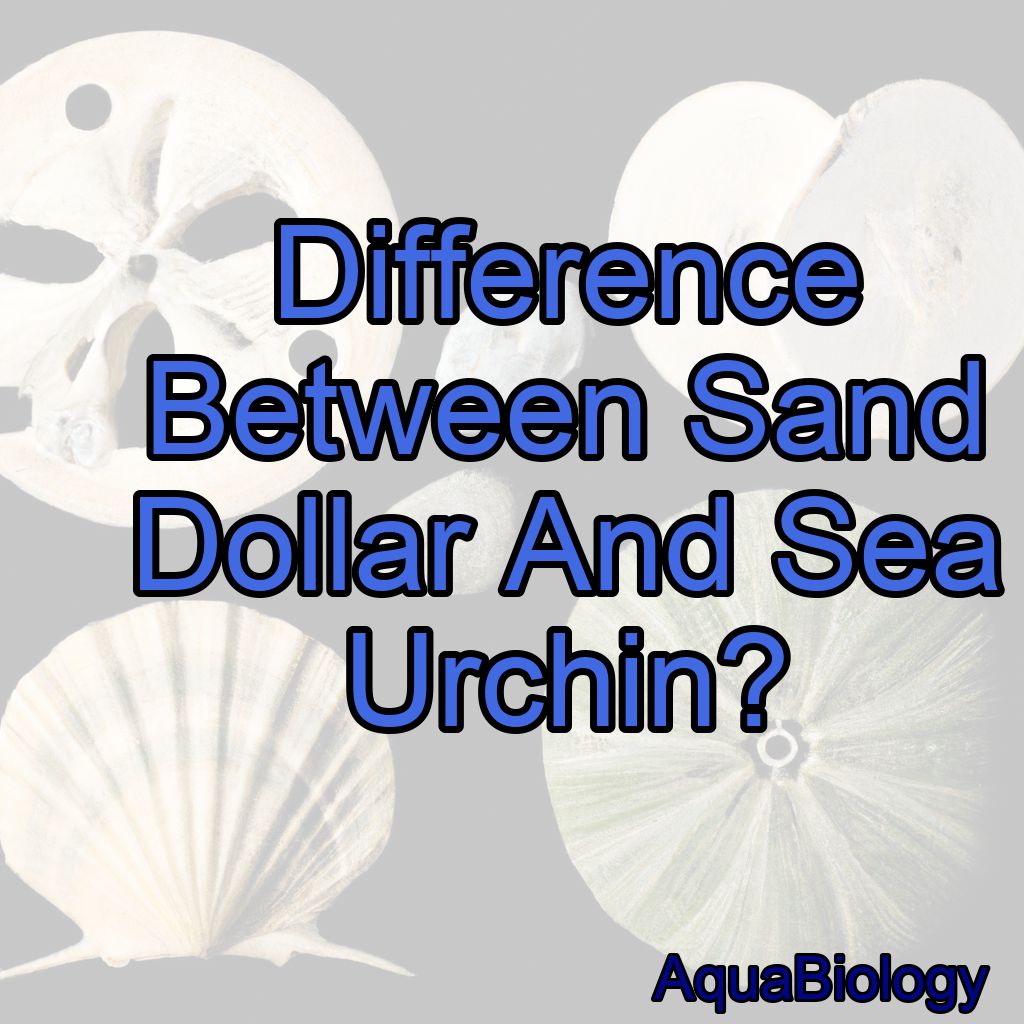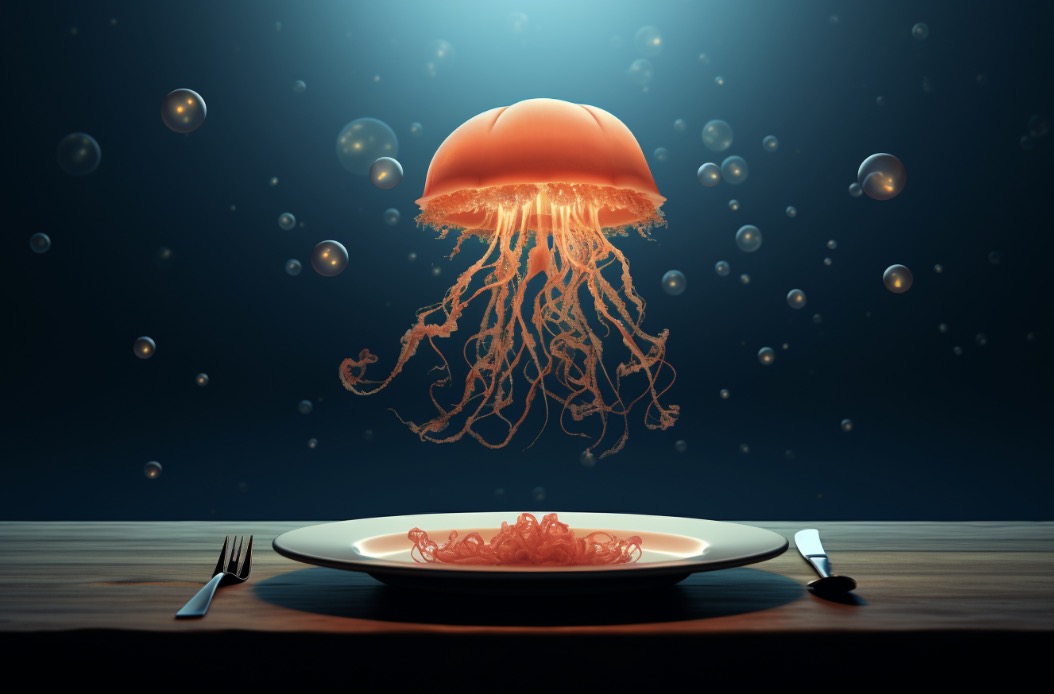As a marine biologist, I have always been fascinated by the beauty of the ocean and its inhabitants.
Sand dollars are flat, round marine animals with a rigid skeleton, while sea urchins have a spherical shape and spines covering their body.
One of my favorite creatures in the sea is the sand dollar.
However, many people often confuse it with another sea creature, the sea urchin.
While they may look similar at first glance, there are actually several key differences between these two fascinating creatures.
Appearance
At first glance, both sand dollars and sea urchins may look similar due to their round, spiky shape. However, upon closer inspection, there are several key differences in their appearance.
Sand dollars have a flat, circular body that is often covered in a velvety coating of tiny hairs. They also have five petal-like structures on their body, which are used for movement and feeding.
In contrast, sea urchins have a more spherical body shape with long, sharp spines covering their surface.
Habitat
Another major difference between sand dollars and sea urchins is their habitat.
Sand dollars are typically found in shallow, sandy areas along the ocean floor.
They prefer calm, protected waters and are often found in large numbers.
Sea urchins, on the other hand, can be found in a variety of habitats, including rocky reefs, seagrass beds, and even kelp forests.
They are often found in deeper waters than sand dollars and can thrive in a range of conditions.
Feeding Habits
While both sand dollars and sea urchins are echinoderms and have similar digestive systems, they have different feeding habits. Sand dollars are filter feeders, which means that they ingest small particles of food that are suspended in the water.
They use their petal-like structures to create a current that pulls water and food towards their mouth. Sea urchins, on the other hand, are grazers and feed on seaweed and other plant material that is found on the ocean floor.
Reproduction

Sand dollars and sea urchins also have different reproductive habits.
Sand dollars reproduce sexually, with males and females releasing their eggs and sperm into the water.
Fertilization occurs externally, and the resulting larvae drift in the water column before settling on the ocean floor and developing into adult sand dollars.
Sea urchins also reproduce sexually, but their eggs and sperm are typically released directly into the water column, where fertilization occurs.
The larvae then develop and settle on the ocean floor, where they grow into adult sea urchins.
Ecological Importance
Both sand dollars and sea urchins play important roles in their respective ecosystems.
Sand dollars are important filter feeders, helping to remove small particles from the water and improving water quality.
They also serve as an important food source for a variety of marine predators, including fish, crabs, and sea birds.
Sea urchins, on the other hand, are important grazers that help to control the growth of seaweed and other plant material in their habitats.
They are also an important food source for a variety of marine predators.
Economic Importance
Sand dollars and sea urchins also have economic importance for humans.
Sand dollars are often collected by beachgoers as souvenirs, and can also be used in arts and crafts.
Sea urchins are harvested for their roe, which is a delicacy in many cultures and is used in sushi and other dishes.
Sea urchin harvesting can be a lucrative industry in some areas, but it is important to manage these populations carefully to prevent overfishing.
Conservation Status
Both sand dollars and sea urchins are considered to be relatively abundant and are not currently threatened with extinction. However, like all marine life, they are vulnerable to habitat destruction, pollution, and overfishing.
It is important to manage these populations carefully to ensure their long-term survival and to protect the health of the marine ecosystems in which they live.
In Conclusion
In conclusion, while sand dollars and sea urchins may look similar at first glance, there are several key differences between these two fascinating creatures.
Sand dollars have a flat, circular body and are found in shallow, sandy areas.
They are filter feeders and reproduce sexually.
Sea urchins have a more spherical body shape and can be found in a variety of habitats.
They are grazers and also reproduce sexually.
Both sand dollars and sea urchins are important members of their respective ecosystems and have economic and ecological importance for humans.
It is important to manage these populations carefully to ensure their long-term survival and protect the health of our oceans.
5 Facts About Sand Dollars and Sea Urchins
1. Sand dollars have a flat, circular body while sea urchins have a spherical shape with spines.
2. Sand dollars are filter feeders, while sea urchins are grazers.
3. Sand dollars are typically found in shallow, sandy areas while sea urchins can be found in a variety of habitats.
4. Both sand dollars and sea urchins are important members of their ecosystems, with economic and ecological importance for humans.
5. It is important to manage these populations carefully to ensure their long-term survival and protect the health of our oceans.
FAQs
What sea urchin looks like a sand dollar?
There is no sea urchin that looks exactly like a sand dollar, but some species of sea urchins may have a similar shape and coloration.
What differences do the urchin and sand dollar have? The main differences between urchins and sand dollars are their shape and spines.
Urchins are round and covered in spines, while sand dollars are flat and have short spines or none at all. Additionally, sand dollars have a distinctive five-pointed shape and a unique feeding mechanism that involves tiny hair-like structures called cilia.
What animal is inside a sand dollar? Sand dollars are not actually animals, but rather species of flattened sea urchins.
They have a hard exoskeleton called a test that is covered in small spines and tiny hairs called cilia. The cilia help the sand dollar move along the ocean floor and capture food particles.
Inside the test, there is a complex system of internal organs, including a mouth, digestive system, and reproductive organs.
What animal looks like in a sand dollar?
Sand dollars are actually a type of echinoderm, not an animal that looks like a sand dollar.
Are sand dollars the same as sea urchins? No, sand dollars and sea urchins are not the same.
While they both belong to the same phylum (Echinodermata), they are different classes. Sand dollars are in the class Echinoidea, while sea urchins are in the class Anthozoa.
What are 2 characteristics of sea urchins and sand dollars?
Sea urchins and sand dollars are echinoderms and have a radial symmetry and a hard exoskeleton made of calcium carbonate.




